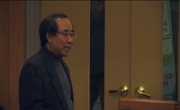Objectives This study was to enhance mathematical creativity and mathematical interest through the Math story program suitable for first-year high school classes. First, the purpose of this study based on the necessity of the above research is to crea...
http://chineseinput.net/에서 pinyin(병음)방식으로 중국어를 변환할 수 있습니다.
변환된 중국어를 복사하여 사용하시면 됩니다.
- 中文 을 입력하시려면 zhongwen을 입력하시고 space를누르시면됩니다.
- 北京 을 입력하시려면 beijing을 입력하시고 space를 누르시면 됩니다.

Math story 프로그램을 활용한 수업이 수학적 창의성 및 수학적 흥미도에 미치는 영향 = The Effect of Classes Using the Math Story Program on Mathematical Creativity and Mathematical Interest
한글로보기부가정보
다국어 초록 (Multilingual Abstract)
Objectives This study was to enhance mathematical creativity and mathematical interest through the Math story program suitable for first-year high school classes. First, the purpose of this study based on the necessity of the above research is to create an environment to apply the Math story program. Second, the Math Stroy program was designed and applied. Third, it is to enhance students' mathematical creativity and mathematical interest by applying educational activities related to the Math story program activities to school classrooms.
Methods The researcher was working at 00 High School located in 00 Metropolitan City. The study was conducted on 56 students in two classes in the first grade of this school. Two classes were selected based on the results of the midterm exam in the second semester of the first grade. Class 1 was divided into experimental classes and class 1 was divided into control classes. The study period was from October 11 to December 12, 2022, and 13 classes were conducted for about 2 months. The experimental class (32 students) was taught using the Math story program, and the control class (32 students) was taught focusing on traditional textbooks and teacher guidance books. The experimental class and the control class conducted different learning activities, but the learning content and guidance content were taught at the same level.
Results In this study, the following results were obtained. First, in this study, the learning contents for each unit were first set and classes were conducted using the Math story program. By applying this to the class, mathematical creativity and mathematical interest could be enhanced. Second, classes using the Math story program were more effective in mathematical creativity and mathematical interest compared to traditional textbooks and teacher guidance-oriented classes for students in the upper, middle, and lower ranks. Third, in classes using the Math story program, low-ranking students, who have usually been ignored in math classes, also became interested in the class, showing improvement in mathematical creativity and mathematical interest.
Conclusions In conclusion, the experimental class taught using the Math story program was more effective in mathematical creativity and mathematical interest than the control class.
동일학술지(권/호) 다른 논문
-
대학생들의 진로탐색 활동을 통한 관점과 인식의 변화경험에 관한 질적 사례연구
- 학습자중심교과교육학회
- 신민주(min ju Shin)
- 2023
- KCI등재
-
자기이해 집단미술치료 프로그램이 지역아동센터를 이용하는 아동들의 자아존중감과 대인관계에 미치는 효과
- 학습자중심교과교육학회
- 박완성
- 2023
- KCI등재
-
네트워크텍스트분석을 통한 숲 체험 관련 연구동향 분석: 국내 학술지 논문을 중심으로
- 학습자중심교과교육학회
- 김영환
- 2023
- KCI등재
-
대학생의 자기이해도 집단 유형에 관한 연구: PBL 수업 참여 학생을 중심으로
- 학습자중심교과교육학회
- 신주랑
- 2023
- KCI등재




 KCI
KCI


